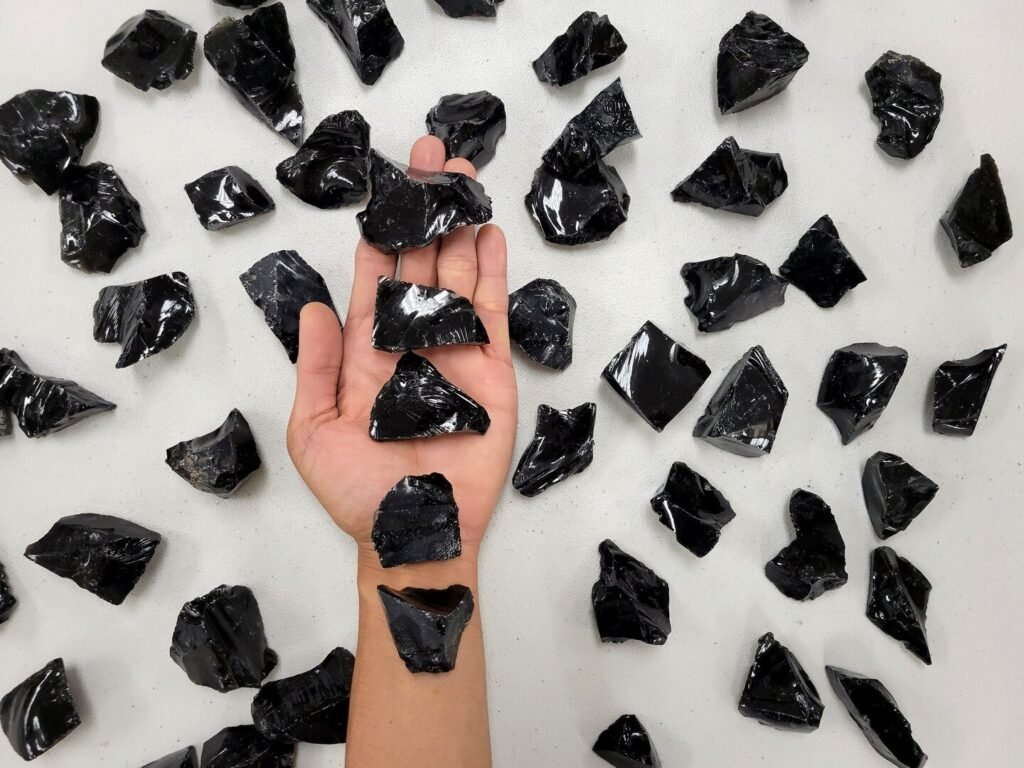Obsidian: Nature’s Sharpest, Most Mysterious Stone
Born in the fiery heart of a volcano, obsidian is not just a rock—it’s a marvel of natural alchemy. This jet-black volcanic glass has been revered since the dawn of civilization, admired for its mirror-like sheen, razor-sharp edges, and almost mystical energy. Whether you’re an archaeology buff, a geology geek, or a lover of beautiful things, obsidian has something to fascinate you.
Obsidian forms when molten lava cools so rapidly that it doesn’t have time to crystallize. The result is a smooth, glassy stone with a texture so fine it looks like it’s been sculpted by hand. While typically black, obsidian can also appear in shades of green, brown, or even rainbow and snowflake patterns due to trace elements or inclusions—each piece a unique geological fingerprint.
One of obsidian’s most famous attributes is its sharpness. When fractured, it breaks with a conchoidal (curved) pattern, creating edges so fine they can slice at the molecular level. In fact, obsidian scalpels are still used today in specialized surgical procedures, as their blades can be hundreds of times sharper than modern steel.
Ancient cultures knew this instinctively. Obsidian was the go-to material for crafting tools, weapons, and ceremonial blades. Aztec warriors wielded obsidian-edged swords called macuahuitl that could reportedly decapitate a man or horse in one blow. Neolithic peoples across Europe, the Middle East, and the Americas used obsidian for knives, arrowheads, and scrapers—tools that were as deadly as they were beautiful.
Read About: The Shadow Beneath the Surface

Archaeologists prize obsidian for more than its sharpness. Because each volcanic source produces slightly different obsidian, researchers can trace where ancient people obtained their materials—even when traded across hundreds of miles. A small obsidian blade found at a dig site can reveal ancient trade routes, social networks, and migration patterns.
It’s also one of the earliest materials used by humans to make mirrors. Polished obsidian was used in Mesopotamia and Mesoamerica for reflective surfaces long before the invention of glass mirrors. Looking into a piece of obsidian wasn’t just practical, it was seen as peering into another world, often used in shamanic or divinatory practices.
Even today, obsidian holds a powerful place in spiritual and metaphysical circles. It’s known as a “psychic vacuum cleaner”—a stone that absorbs negative energy and grounds chaotic emotions. Black obsidian is believed to protect against spiritual or emotional harm, acting like a shield against negativity. It’s also used to support clarity, truth-telling, and transformation.
Varieties like snowflake obsidian, with its serene white patches, are thought to balance the mind and spirit, while mahogany obsidian is used for grounding and releasing energy blockages. Whether you believe in crystal energy or not, there’s something undeniably potent about holding a piece of obsidian in your hand—a solid fragment of earth’s most primal force.
Obsidian’s allure hasn’t faded with time. From minimalist jewelry and high-end interior decor to surgical blades and meditation tools, obsidian remains as relevant because it bridges the gap between utility and artistry, science and mystery.
So, the next time you come across a smooth black stone, take a closer look—it might be more than just a pretty rock. It could be obsidian: sharp as truth, dark as night, and born of fire.
Want to hold fire in your hand? Explore a local rock shop or museum and see if you can find a piece of obsidian. Just be careful—it’s beautiful, but it bites.

